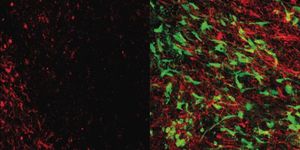Breakthrough Malaria Vaccine Is a Ray of Hope
University of Oxford scientists have developed a vaccine against malaria, which they describe as having “unprecedented efficacy levels”.
A preprint study details a trial that tested the vaccine in 450 children from Burkina Faso, aged between 5 and 17 months. The participants were randomized to receive either the malaria vaccine or a control rabies vaccine. Shots were timed to be administered just before peak malaria season in the region.
The results were hailed as a breakthrough: The vaccine showed 77 percent efficacy in the higher dose group. This is the first malaria vaccine to meet the World Health Organization’s goal of a vaccine of at least 75 percent efficacy to manage malaria on a global scale.
While the world’s focus is fixed on the ongoing coronavirus pandemic, malaria is of more pressing concern in many African countries. There, data shows that there have been more deaths due to malaria than from COVID-19.
On a molecular level, vaccinating against the parasite that causes malaria is far more complicated than immunizations against SARS-CoV-2. A side-by-side comparison of both these pathogens’ genomes reveals why—malaria parasites have around 5,300 genes, while the coronavirus has around a dozen. Consequently, vaccines need to generate a much higher immune response in order to protect against infection.
"That's a real technical challenge," said Adrian Hill, who led the study. "The vast majority of vaccines haven't worked because it's very difficult." According to Hill, the new vaccine is a game-changer and "has the potential to have a major public health impact".
This is a breakthrough in the field where researchers have spent over a century devising strategies to eradicate or control malaria. Progress has been slow so far, with the disease representing a persistent and significant threat to the public health economic development in many tropical and subtropical regions. With an estimated 300-500 million cases and 2.7 million malaria-related deaths from malaria annually, data from this trial indicate a light at the end of the tunnel.
Sources: The Lancet preprints, BBC News, Nature.









